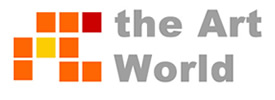Many have asked whether there is a correlation between substance use and creativity. Some artists, writers, and musicians have claimed that substances enhance their creative processes, suggesting a complex relationship worth exploring. Research indicates that while some substances may temporarily boost certain aspects of creativity, they can also hinder the creative process long-term.
The exploration of this topic reveals various perspectives on how substances influence creative thinking. Certain studies suggest that mild intoxication may lead to more unconventional ideas, while other evidence points to the risks associated with substance dependence, which often stifles originality. Individuals might find themselves at a crossroads between seeking inspiration from substances and relying on sustainable, healthy practices for creativity.
As the discussion continues, it becomes crucial to distinguish between anecdotal experiences and scientific findings. The influence of substances on creativity is not black and white, and understanding this nuance can empower individuals to foster their artistic expression without compromising their well-being.
Historical Perspectives on Creativity and Substance Use
The interplay between creativity and substance use has been noted throughout history, often reflecting cultural attitudes and psychological theories. Various cultures have celebrated the use of substances as a means to enhance creativity, while early psychological research has sought to understand this phenomenon more deeply.
Cultural Influence and Notable Examples
Throughout history, many cultures have linked creativity with altered states of consciousness. Ancient civilizations, such as the Greeks and Romans, embraced wine and other intoxicants during artistic endeavors. For example, the poet Homer incorporated themes of intoxication into his works, suggesting a connection between creativity and drugs.
Notable figures like Vincent van Gogh and Charles Baudelaire battled substance use, often finding inspiration in their experiences. Baudelaire’s collection “Les Fleurs du mal” reflects themes influenced by his opium use. Similarly, van Gogh’s artwork often depicts scenes of contemplation, which some speculate may have been enhanced by his struggles with mental health and substance use.
Psychological Theories and Early Research
Early psychological theories proposed that certain substances could lower inhibitions, fostering creativity. Researchers in the mid-20th century, including studies on LSD and its effects on thought processes, examined how psychedelics could promote divergent thinking.
These studies revealed mixed results. Some participants experienced heightened creativity, while others faced cognitive disruptions. The link between drugs and creativity became a focal point for further research, leading to debates about the validity of using substances as a catalyst for creative thought.
Analyzing the Evidence
Research exploring the relationship between substance use and creativity presents varied findings. This includes empirical studies and the effects of specific substances on creative processes. A thoughtful analysis highlights both positive and negative correlations.
Empirical Studies on Creativity and Substance Use
Empirical studies suggest a complex relationship between substance use and creativity. A notable body of research indicates that some artists and innovators report enhanced creativity when using certain substances, particularly alcohol and marijuana. For example, studies have revealed that moderate alcohol consumption may lower inhibitions and promote divergent thinking.
Conversely, excessive use of substances often leads to cognitive decline, impacting creativity negatively. A meta-analysis of various studies has shown that while certain substances may trigger creative thought processes, chronic use is frequently linked with reduced problem-solving abilities and diminished overall cognitive function. This duality raises questions about context and the individual’s psychological state during substance use.
Impact of Different Substances on Creative Processes
Different substances produce varied effects on creativity. Alcohol, for example, might stimulate creative thought in low doses by relaxing social anxieties and fostering an open mindset. Conversely, it can impede logical reasoning and focus at higher levels.

In contrast, stimulants may enhance cognitive speed but can also result in jitteriness or anxiety, which interferes with creative flow. Each substance’s impact depends significantly on dosage, individual differences, and contextual factors.
Psychological and Neurological Mechanisms
The relationship between substance use and creativity involves complex psychological states and neurological changes. This section examines key mechanisms that may explain how altered states of consciousness and brain function contribute to creative expression.
Altered States of Consciousness
Substances can induce altered states of consciousness, affecting perception and cognition. These changes may lead to a heightened state of awareness or new ways of thinking. For example, psychedelics like LSD and psilocybin can create experiences that disrupt normal cognitive patterns.
Individuals might find that everyday thoughts become more dynamic or fragmented in these states. This phenomenon can facilitate unique connections between seemingly unrelated ideas, enhancing creative output. Enhanced visualization, a common effect of certain substances, can also inspire artistic expression.
Additionally, the relaxation and reduced inhibition that often accompany substance use can encourage experimentation. Consequently, the mind may explore concepts and art forms otherwise hidden in a more conventional state of awareness.
Brain Function and Neurochemistry
The impact of substances on brain function and neurochemistry is significant. Neurotransmitters such as dopamine play a crucial role in creativity. Many substances increase dopamine levels, which can enhance mood and motivation.
Research indicates that substances like alcohol may lower inhibitions, allowing for more free-flowing thought processes. This can lead to innovative ideas and solutions that might not emerge in a sober state. Conversely, stimulants may enhance focus and energy, potentially aiding in the execution of creative projects.
Changes in connectivity between brain regions involved in creativity may also occur. For instance, substance use can alter the communication networks responsible for integrating diverse information. This neurobiological rewiring might explain why some individuals report enhanced creative capabilities under the influence of certain substances.
Implications and Ethical Considerations
The relationship between substance use and creativity raises important implications and ethical considerations. Understanding these aspects informs approaches to fostering creativity while minimizing risks associated with substance use.
Promoting Healthy Creative Practices
Encouraging creativity through healthy means is vital. Artists and creatives can benefit from exploring techniques that enhance inspiration without relying on substances. Examples include:
- Mindfulness Techniques: Practices such as meditation and yoga can foster a clear and open mind, conducive to creative thought.
- Structured Creative Time: Scheduled brainstorming sessions may lead to productive exploration of ideas.
- Collaboration: Working with other creatives provides new perspectives, stimulating imaginative solutions.

Cultivating these practices creates an environment where creativity flourishes. Cultivating habits that enhance creative output while ensuring personal well-being is essential.
Addressing Substance Abuse Risks
Substance use can lead to serious health issues and creative blocks. It is important to raise awareness of these risks among artists and creatives. Potential risks include:
- Dependency: Increased tolerance can lead to dependency, affecting overall well-being and creative output. Alcohol detox in particular can be extremely dangerous. Professional treatment facilities, such as a Beverly Hills rehab center, offer safe, medically supervised detoxification programs with comprehensive therapeutic support for those seeking recovery in a comfortable, discrete environment.
- Impaired Judgment: Substances can cloud decision-making, possibly stifling originality and authenticity.
- Legal and Ethical Concerns: Using illegal substances can carry severe legal repercussions, affecting reputation and career.
Offering resources for support and education about substance use can help mitigate these risks. Promoting mental health resources is essential for fostering a safer creative community. If you or someone you know needs help, you can find recovery here.

